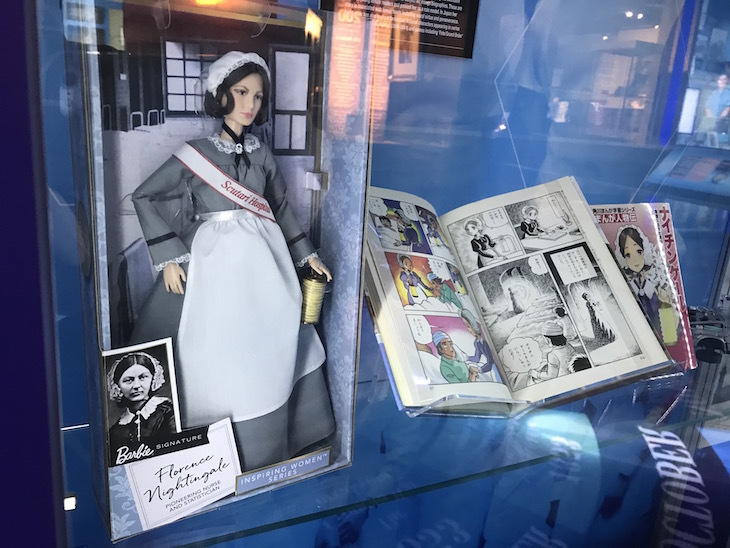
A new exhibition at Florence Nightingale Museum marks the 200th anniversary of her birth.
To be honest, I hadn't expected to see a DeLorean in an exhibition about Florence Nightingale. The nursing pioneer is name-checked in the first Back to the Future film, and so the time-travelling car enters this 'Nightingale in 200 objects' exhibition at number 87. (Did nobody think of making it number 121, for a geeky gigawatts reference?)

The unexpected model is symptomatic of this delightfully quirky bicentenary exhibition. At every turn, we find the peculiar, the tangential and the insightful.
It can't have been straightforward to mount a fresh exhibition about the great lady, when the museum's permanent display already does such a good job of telling her life story. Instead, it can be thought of as a continuation of the main museum, moving beyond the nurse's death aged 90 to look at her legacy and influence.

The small display begins with a recreation of Nightingale's bedroom in South Street, Mayfair. Nightingale suffered ill-health for most of her later life, and was often bedridden. This did not deter her mission to reform healthcare. Her bed became an office, from which she sent out countless missives. They've even recreated her perfume, should you want a sniff. It can only be described as 'Turkish Delight'.

The second, and main room, is arranged around a giant recreation of her famous lamp. We learn that almost all representations of the lamp — from those on statues to banknotes — misrepresent that totemic light. It would have been a Fanoos lamp, which looked like a cylindrical accordion, and an example of which can be seen in the main museum. The other great Nightingale fallacy is to call her a nurse. She probably only nursed for about a year of her life, and spent much longer as a campaigner, researcher and reformer for the profession.

Almost every exhibit reveals something new (at least to me) about the lady. The salvaged door knocker from her home on South Street would have been struck by the likes of Dickens, Gladstone and even Garibaldi, all members of her vast network of friends and collaborators. Ada Lovelace was a companion in early life, and she cosied up to Queen Victoria in later years. Most impressively, Nightingale was the first woman admitted to the Royal Statistical Society, for her pioneering work in that field. The paperwork, on show here, is written in entirely male pronouns because the possibility of a female member had never previously occurred.
The exhibition is perhaps most interesting when revealing her continued influence today. Modern nursing is technologically unrecognisable from Nightingale's era, yet the systems and practices she introduced are still at the core of the profession. Her mantra about always washing hands has never had more resonance than now, as coronavirus sweeps the planet.

We find her on stamps and mugs, sharing a postcard with Mother Theresa and Princess Diana, inspiring a 19th century curry dish, popping up in an Assassin's Creed video game and orbiting the sun in the guise of asteroid 3122 Florence. In death as in life, there's little this remarkable person could not achieve.

This is a spellbinding exhibition that, when coupled with the main galleries, gives a better appraisal of an individual's life and legacy than any other single-subject museum in London.
My one criticism is the way the exhibition is displayed. The glass panels fade to darkness every 10 minutes or so to give priority to a video. This might be useful for museum-goers who just want to dip toes, but it's a little irksome for us old-fashioned folk who prefer our exhibits to stay illuminated. Perhaps bring your own lamp.

Florence Nightingale in 200 Objects, People & Places is at the Florence Nightingale Museum from 8 March 2020 until at least 7 March 2021. Entrance is included in admission price £9/£7. You can also nominate a 200th exhibit for the display — which actually only goes up to 199. Watch out for a series of events to mark the anniversary via #Nightingale2020.




